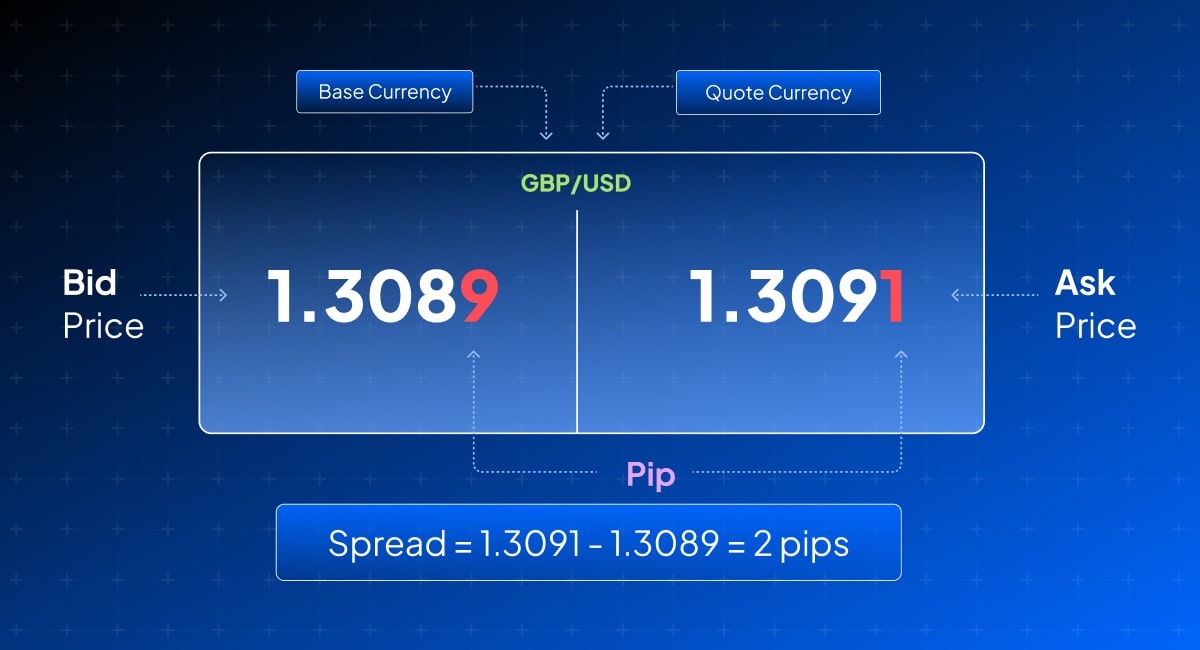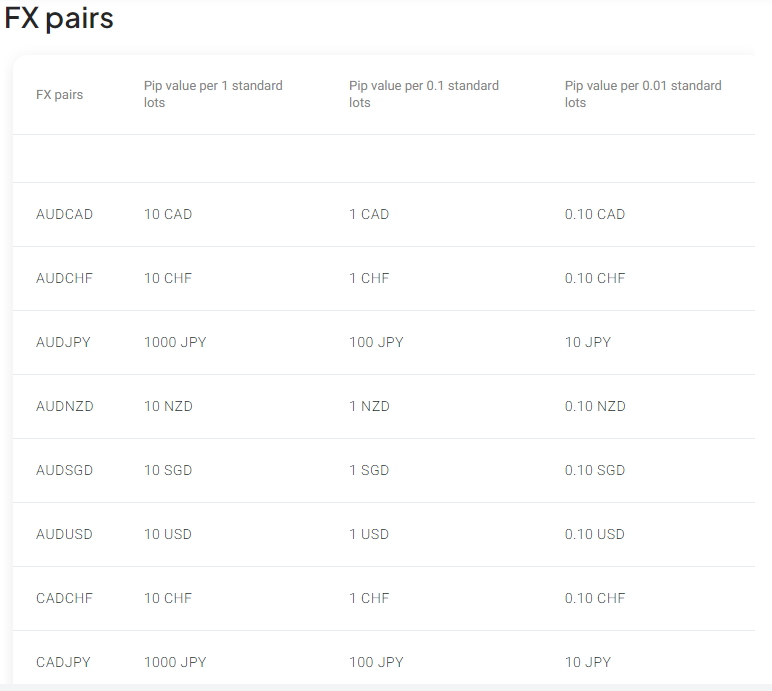Factors Affecting Pip Value
Understanding Pip Value Calculation is essential in forex trading as it helps traders determine the potential profit or loss for each trade
Master the Basics of Pip Value Calculation
A pip, which stands for "percentage in point," is the smallest unit of measurement in currency pairs. Several key factors influence this calculation, which is crucial for forex traders.
Dive into Pepperstone's detailed explanation of what pip value is. Don't miss out as understanding pip value can assist your trading strategy!
Factors Influencing Pip Value
- Lot Size: The number of units in a trade, ranging from micro-lots (1,000 units) to standard lots (100,000 units). Larger lot sizes increase the value proportionally.
- Currency Pair: Different pairs have different pip sizes. For example, EUR/USD typically has a pip size of 0.0001, while USD/JPY has a pip size of 0.01.
- Account Currency: This determines the conversion rate. If your account is denominated in a different currency than the base currency of the traded pair, you must convert the value back to your account currency, which can fluctuate and impact the calculation.

Trading Platforms and Their Relationship to Pip Value
While the primary determinants to a change in the pip value are related to the specific trade parameters (currency pair, lot size, and current exchange rate), the trading platform can influence the overall trading experience, costs, and potential gains or losses associated with pip movements through spreads, commissions, leverage, and available currency pairs.
Here are different ways a trading platform might influence pip value:
- Spreads and Commissions: Different trading platforms and brokers offer different spreads (the difference between the bid and ask price) and may charge varying commissions. While this does not directly affect the pip value calculation, it affects the cost of trading and the net profit or loss per pip.
- Leverage Offered: The leverage provided by a platform can influence the effective value of a pip by allowing traders to control larger positions with a smaller amount of capital. This can amplify the impact of each pip movement on a trader's account balance.
- Currency Pair Availability: Some platforms offer a wider range of currency pairs. The pip value can vary significantly between major pairs (like EURUSD) and exotic pairs (like USDTRY).
- Account Currency: The currency in which the trading account is denominated can affect the pip value. Trading platforms typically offer various base currencies for accounts, and the pip value must be converted to the account's base currency, which can fluctuate based on exchange rates.
Impact of Currency Pair and Lot Size
The choice of currency pair and lot size significantly impacts the monetary value of each movement in the exchange rate.
Currency Pair
Pairs with the US dollar as the quote currency have a fixed value of $10 for standard lots of 100,000 units. For non-USD quote pairs, the value varies and can be calculated by dividing the value of the USD quote currency by the exchange rate.
Lot Size
Standard lots (100,000 units) have a fixed value, while smaller lot sizes like mini lots (10,000 units) and micro lots (1,000 units) reduce the value proportionally.

Volatility and Value Fluctuations
Market volatility refers to rapid and significant price fluctuations, which can affect the potential for profits or losses for traders. However, it's important to note that pip value remains static and is not influenced by volatility or price fluctuations.
Risk Management in Volatile Markets
- Stop-Loss Orders: Automatically attempt to exit trades at predetermined levels to limit losses, though execution is not guaranteed.
- Adjusting Position Sizes: Decrease position sizes in volatile markets may help control potential losses.
- Using Volatility Indicators: Indicators like the Average True Range (ATR) help gauge market volatility.
Understanding the relationship between volatility and value is crucial for effective risk management.
Role of Leverage in Trading
Leverage allows traders to control larger positions with smaller capital, significantly impacting value dynamics. Higher leverage increases value, amplifying both potential profits and losses.
Effective Use of Leverage
- Balance Profits and Losses
- Risk Management Protocols
- Utilise the Preset Lower Leverage
Leverage must be used cautiously to potentially avoid excessive losses.
Conclusion
Understanding how to calculate pip value and the factors affecting it is crucial in forex trading. Trading platforms provide essential tools and data to help traders make informed decisions. The choice of currency pair, lot size, and the role of leverage significantly influence trading dynamics. Market volatility adds complexity, necessitating effective risk management strategies. By mastering these concepts, traders can navigate the forex market more efficiently and enhance their trading strategies.
The material provided here has not been prepared in accordance with legal requirements designed to promote the independence of investment research and as such is considered to be a marketing communication. Whilst it is not subject to any prohibition on dealing ahead of the dissemination of investment research we will not seek to take any advantage before providing it to our clients.
Pepperstone doesn’t represent that the material provided here is accurate, current or complete, and therefore shouldn’t be relied upon as such. The information, whether from a third party or not, isn’t to be considered as a recommendation; or an offer to buy or sell; or the solicitation of an offer to buy or sell any security, financial product or instrument; or to participate in any particular trading strategy. It does not take into account readers’ financial situation or investment objectives. We advise any readers of this content to seek their own advice. Without the approval of Pepperstone, reproduction or redistribution of this information isn’t permitted.